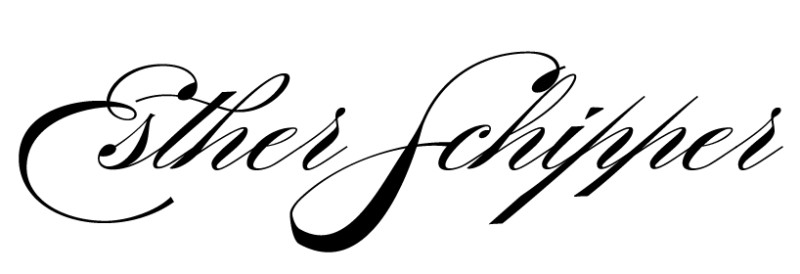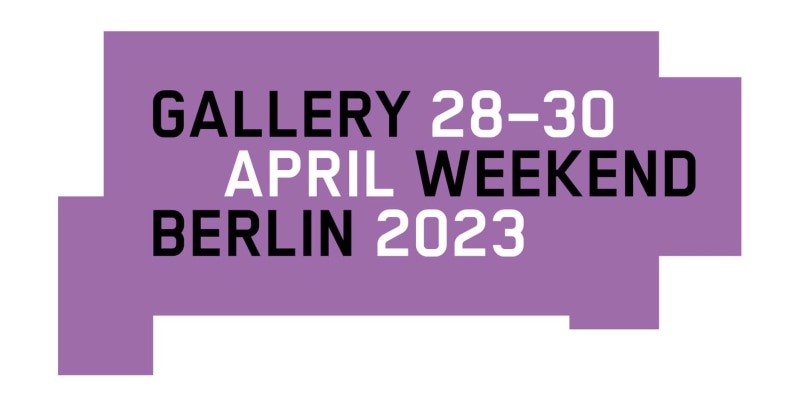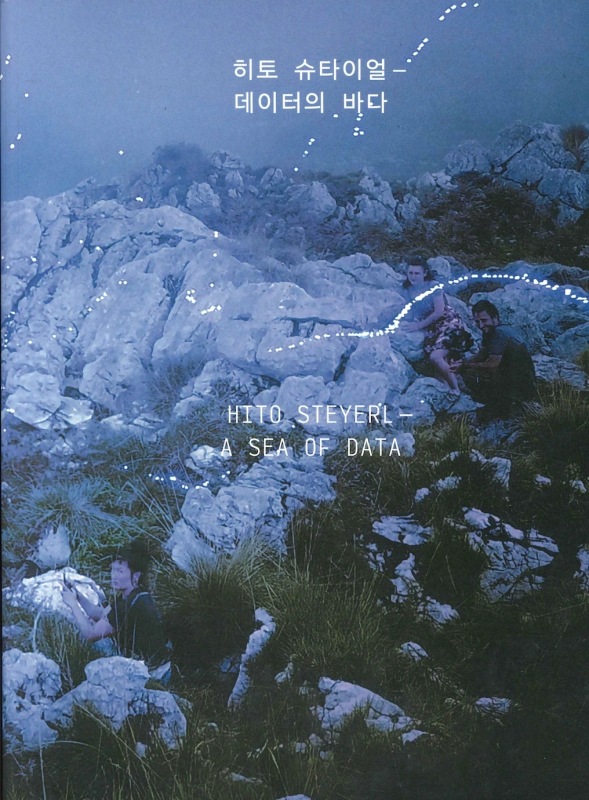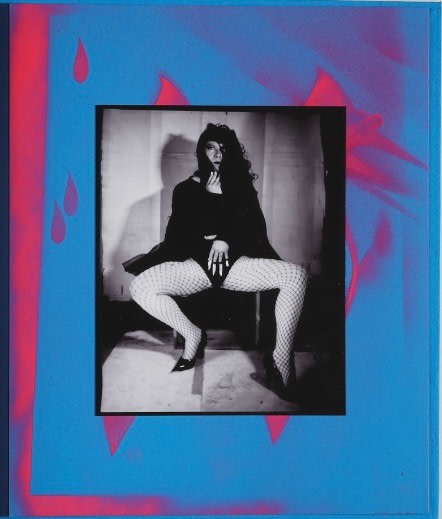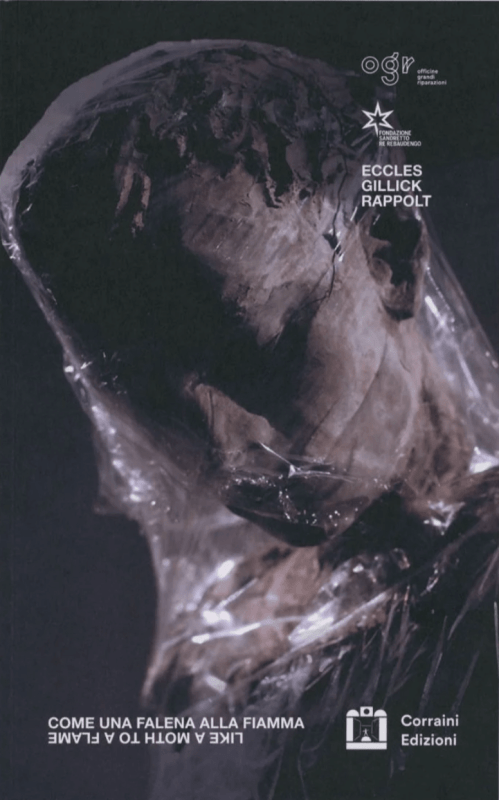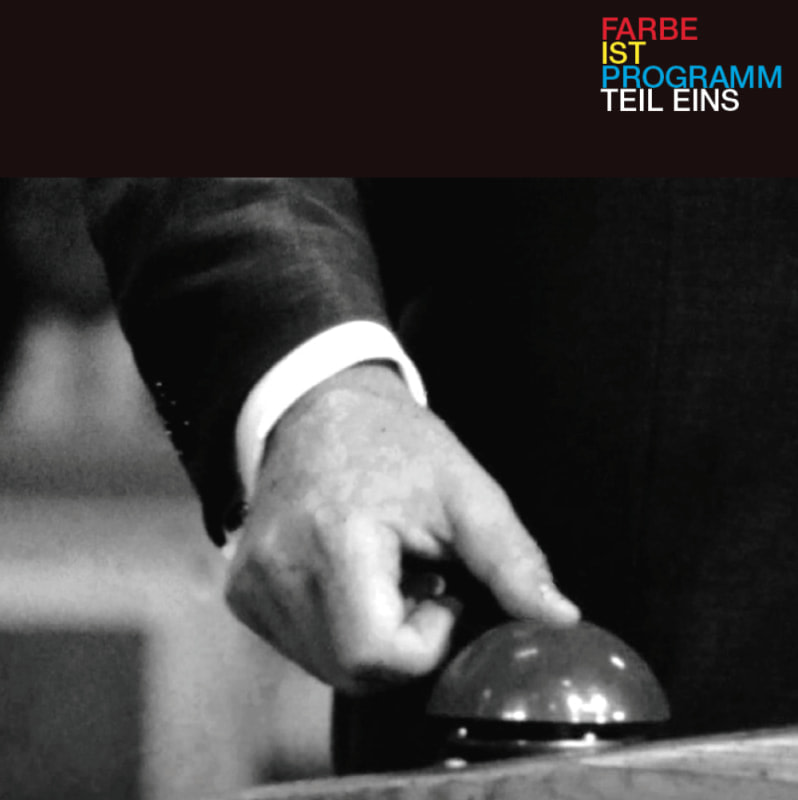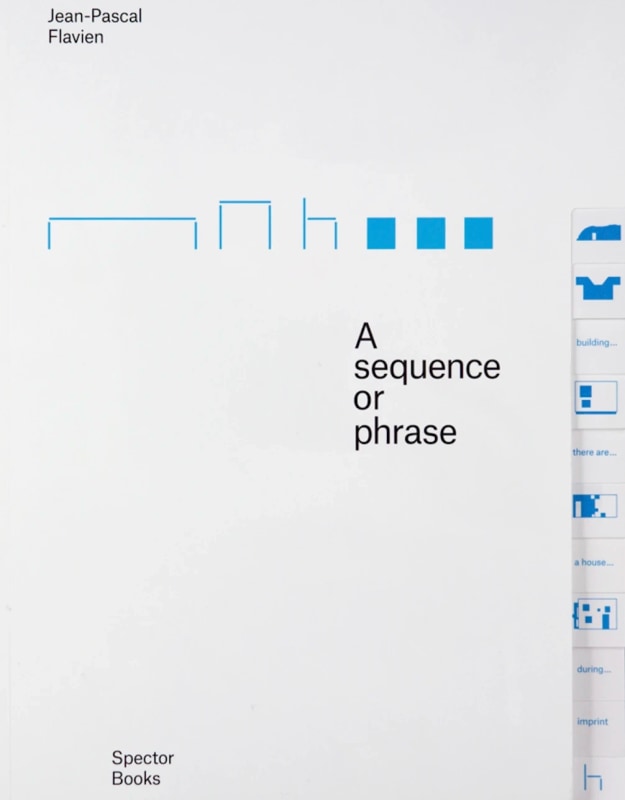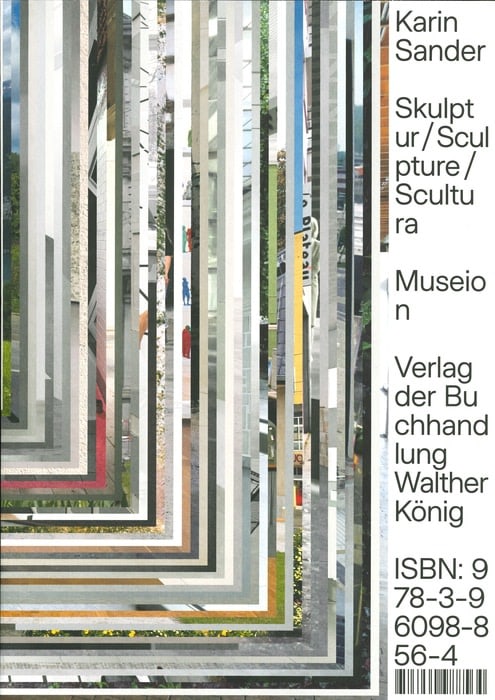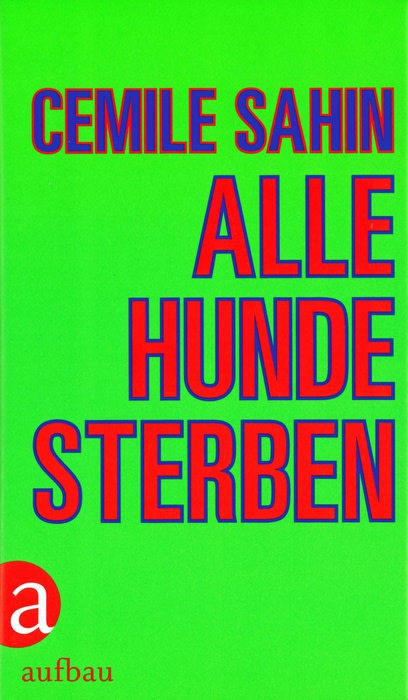Willkommen: Hier finden Sie die deutsche Fassung des Briefes aus BerlinWelcome to the Letter from Berlin! This issue of our newsletter is all about welcoming you to Berlin for next week's Gallery Weekend. At the gallery two extraordinary exhibitions have been installed: Hito Steyerl's Contemporary Cave Art presents a large-scale video environment and in the Niche Sun Yitian's works from her series of doll heads is on view. At the Pergamon museum Liam Gillick's striking intervention adds layers of sound and color to the collection of the museum with its iconic antiquities, among them the Ishtar Gate. At the Hamburger Bahnhof you can still catch Broken Music Vol 2, and Jean-Pascal Flavien's make-up house will be open, as will a group exhibition with Karin Sander. We also highlight solo exhibitions in Germany by Philippe Parreno, Cemile Sahin and Julia Scher and in Europe by General Idea, Daniel Steegmann Mangrané and Ann Veronica Jannsens. Finally, the Reading Corner features new publications. And last but not least we'd like to draw your attention to our Gallery Weekend Berlin guide which features concurrent exhibitions in Berlin and a bespoke Google Map of exhibitions around the city. We hope you enjoy our Letter from Berlin!
|
|
|
Esther Schipper, Berlin
Hito Steyerl
|
|
OPENING FRIDAY APRIL 28, 6–9PM
EXTENDED OPENING HOURS:
SATURDAY APRIL 29, 11AM–7PM
SUNDAY APRIL 30, 11AM–6PM
|
|
|
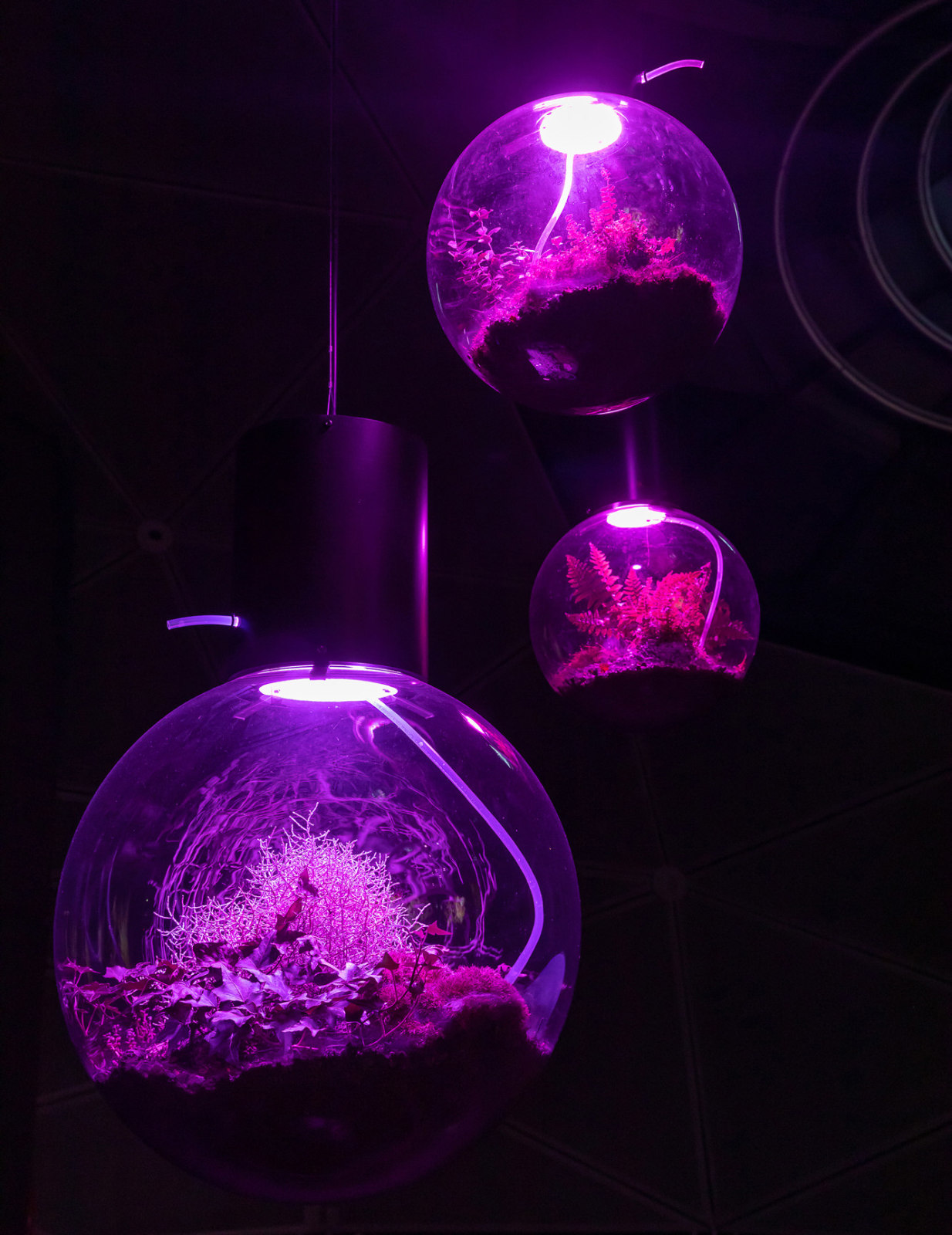
| Hito Steyerl, Animal Spirits, 2022 (detail), single channel HD video, live computer simulation, sensor devices, glass spheres, organic materials, duration: 24 min; simulation, duration variable; dimensions variable. © the artist / VG Bild-Kunst, Bonn 2023. Photo © Kunsthaus Graz/N.Lackner
| |
|
For Gallery Weekend Berlin 2023 Esther Schipper is pleased to present Contemporary Cave Art, Hito Steyerl’s first solo exhibition with the gallery. On view will be a site-specific iteration of her 2022 environment Animal Spirits adapted to the exhibition space. Animal Spirits is a video installation consisting of a film and a live computer-generated animation as well as spatial installation elements. The film and the animation are projected on custom-built, surround screens which create a room within the cave-like exhibition space. Hanging suspended from the ceiling are spherical glass containers with LED growth lamps shining on plants and soil. The planting and maintenance of the plants is handled in cooperation with the transcultural community garden Hevrîn Xelef, and the NGO Flamingo e.V., a network for refugee women and children.
|
|
|

| Exhibition view: Hito Steyerl, A Sea of Data, National Museum of Modern and Contemporary Art, Korea (MMCA), 2022.
Image courtesy of National Museum of Modern and Contemporary Art, Korea (MMCA). Photography by Hong Cheolki.
© the artist / VG Bild-Kunst, Bonn 2023.
| |
|
Apart from plants, the glass spheres also contain sensors that measure proxies for plant health as well as react to proximity of visitors in the space. The data gathered by the sensors influence a light-sparkling cloud of particles, appearing in the projection of an animated prehistorical cave. On the other screen, a narrative video interlaces scenes shot with the German actor Mark Waschke impersonating the economist John Maynard Keynes, with historical film footage, animation, motion graphics and documentary interviews, conducted by Steyerl with shepherds in Northern Spain as well as a group of fellow artists. It touches on topics of post- pandemic conditions of cultural production, the boom of cryptocurrencies and NFT art, and possibilities for systems of decentralization and autonomy, inspired by biological systems behind fermentation. |
|
|
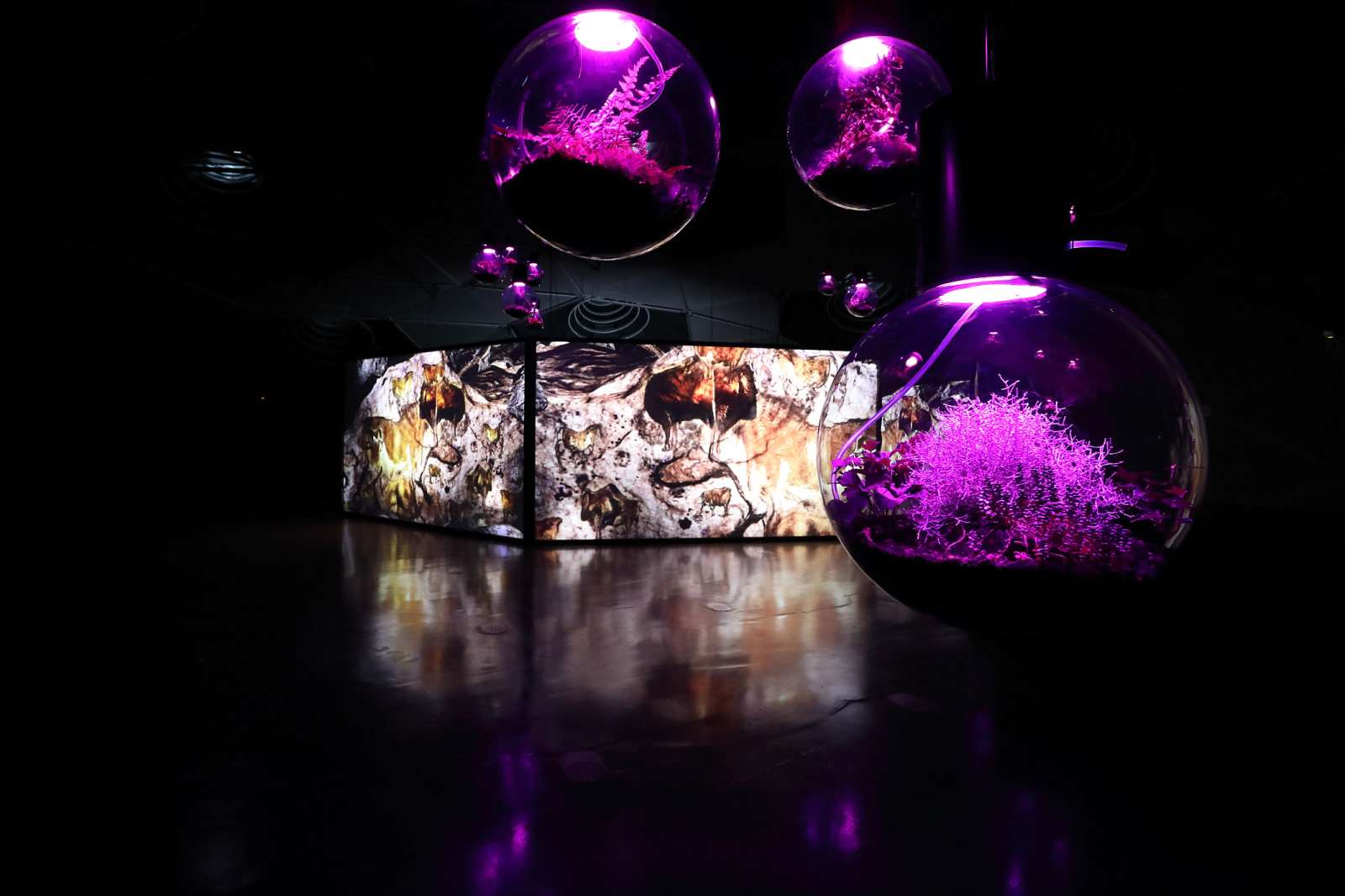
| Exhibition view: Hito Steyerl, Animal Spirits, Space01, Kunsthaus Graz, Graz, 2022. © Hito Steyerl / VG Bild-Kunst, Bonn 2023. Photo © Kunsthaus Graz/J.J. Kucek | |
|
Below find an excerpt from Hito Steyerl's interview with Kate Brown published online at artnet on March 10, 2023. KB: What is your relationship to ideas of evidence and truth when you’re also working with elements of poetry, surrealism, and sci-fi in your films? I am curious about your thoughts as to how truth functions in the context of documentary in 2023—in a world where there is so much flattening out of any sense of a single truth about anything.
HS: I don’t think truth is something that can be fully captured by any form of media. Hannah Arendt once said that you could capture “moments of truth.” So this is more or less what I’m hoping to weave in with other elements. But the full truth is never accessible to any documentary rendition, because it just doesn’t have enough dimensions and perspectives. There’s also the “fake news” angle, which states that nothing at all is true, or all things are equally untrue, which is not factual either. You have things which are closer to reality or to things that happened historically, and you have things that have nothing to do with [reality] whatsoever, and there’s a huge difference between. The full interview, tackling questions about what artificial intelligence, the metaverse, crypto, and an increasingly imperiled natural world might mean, can be found HERE
|
|
|
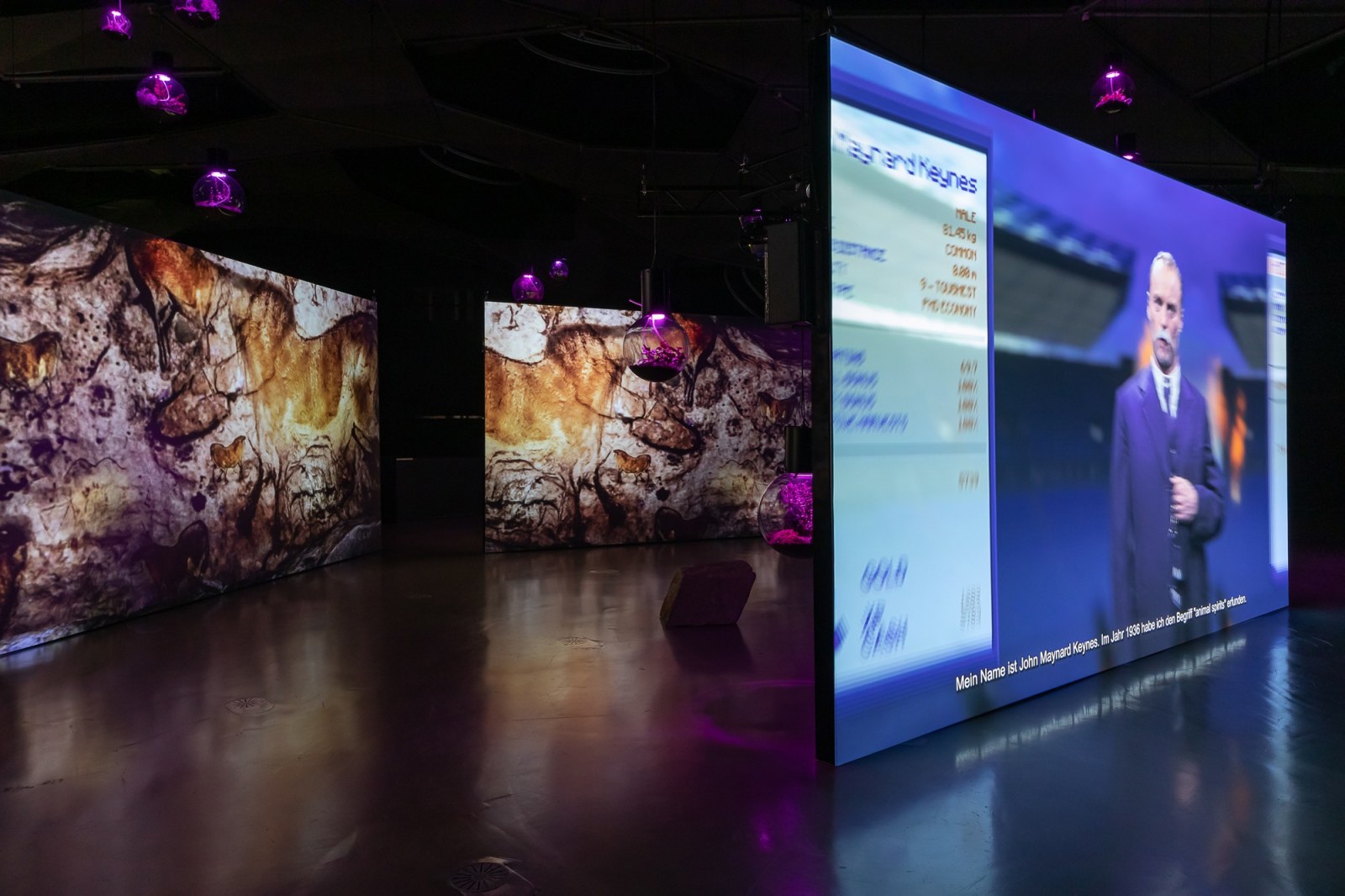
| Exhibition view: Hito Steyerl, Animal Spirits, Space01, Kunsthaus Graz, Graz, 2022. © Hito Steyerl / VG Bild-Kunst, Bonn 2023. Photo © Kunsthaus Graz/N. Lackner | |
|
The glass spheres in the exhibition are being sold to raise funds for relief efforts following the severe earthquake in Turkey and northern Syria. All proceeds from these sales will be donated through Hevrîn Xelef/Flamingo e.v. to Jinwar, the women’s village in Rojava, Northern Syria and personally delivered there to build a health center. |
|
|
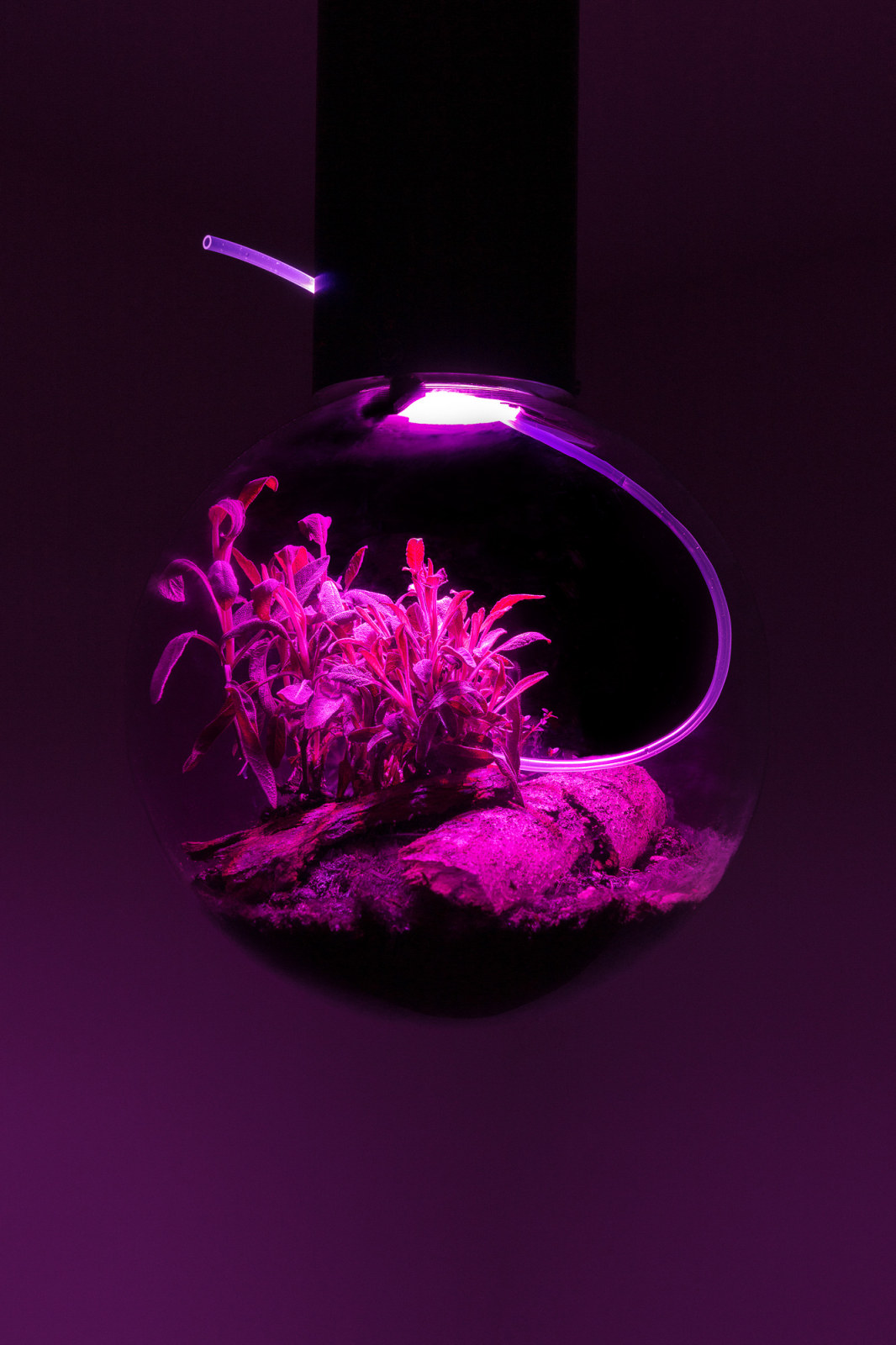
| Hito Steyerl, Animal Spirits: Herb sphere, 2023, glass, soil, plants, LED growth lamps, ø 30 cm. Photo © CHROMA
| |
|
Flamingo is a self-organized and independent NGO from Berlin consisting of activists* for the support of refugee women* in Germany. Its centerpiece is the partner project with the women's village JINWAR in North-East Syria (Rojava). Since Fall 2019, the two projects are connected by a desire to build and expand a free and self-determined life for women*. Thereby the relation to nature, to ecologically sustainable ways of living and to the science of women and life, that is, "jineologie" is at its core. In addition to self-defense, legal counsel and educational programs, in 2019 the Transcultural Healing Herb Garden "Hevrîn Xelef" in Berlin – Neukölln was founded. Here, in addition to workshops and exchange meetings of various feminist and activist groups, joint gardening and knowledge transfer on medicinal herbs take place. Currently, a pedestrian space of feminist resistance is being created around the "Jina Amini" tree, which was planted on the International Day for the Eradication of Violence against Women*. More info: www.flamingo-berlin.org and @flamingo_netzwerk Jinwar (jin means woman in Kurdish, war in Kurdish village, therefore: village of women). Jineoloji (jin means woman in Kurdish, therefore: science of women).
|
|
|
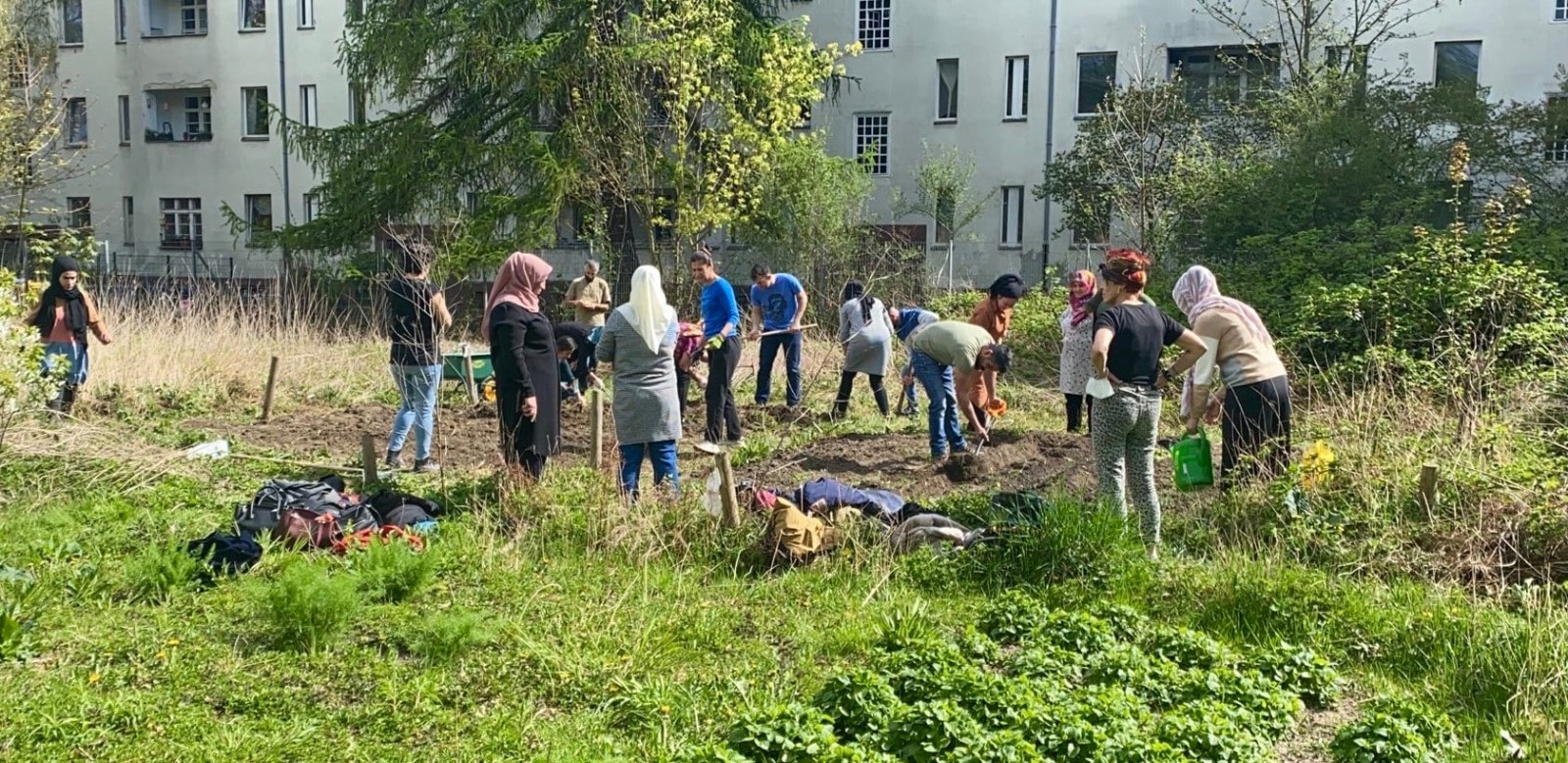
|
Photo © Hevrîn Xelef/Flamingo e.v.
| |
|
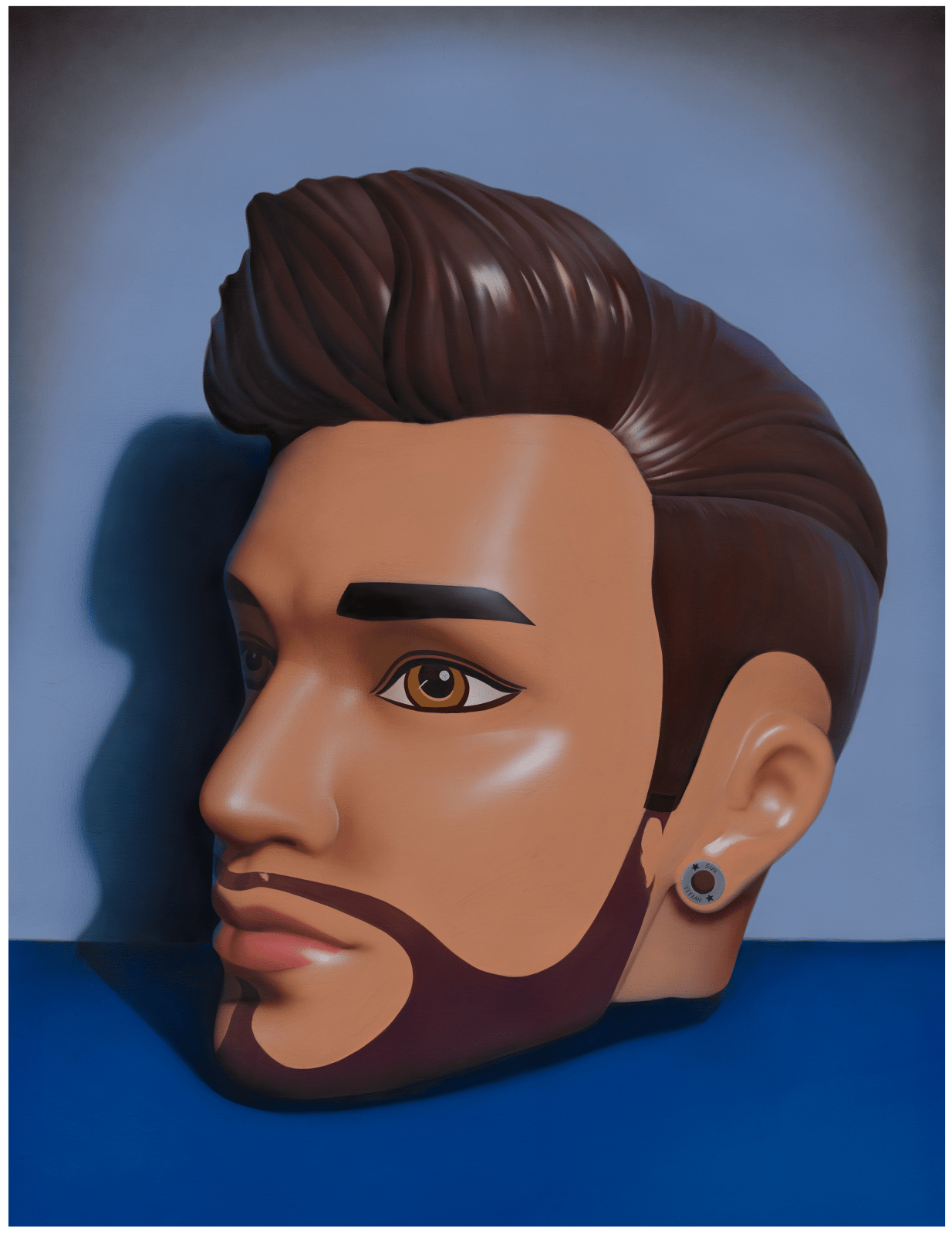
| Sun Yitian, Alger, 2023, acrylic on canvas, 205 x 158 cm. Image © the artist
| |
|
Next week we also open Portrait, a special presentation with works by Sun Yitian whose representation we announced in January. On view will be three new paintings.
Sun Yitian is best known for her paintings of monumentally enlarged mass-produced objects, generally based on staged photographs taken by the artist herself. Lovingly rendered in colorful acrylic paint, the surfaces of the inflatable toys or the heads of dolls—both frequent motifs—shine brightly, often with flecks of reflecting camera lights visible. Sun Yitian’s use of scale further draws attention to the inherent tension between pathos and banality on which the works draw: vastly enlarged the objects gaze at us from their huge eyes as if in puzzlement of their newfound sumptuous grandeur.
At the gallery three works from Sun Yitian’s series of doll heads will be on view. Depicted in gigantic scale, the three male heads look out unconcerned at the world around them with a friendly smile. Each painting portrays a head with distinct skin tone and hair color against a near monochromatic background and floor. The bearded Alger has dark brown hair and honey-colored skin; Kevin is dark-haired and Black; Jason is blond-haired and fair-skinned. The heads are set in a deeply compressed space, yet the viewer nonetheless infers a three-dimensional area from the dark shadow they cast. With their depictions of gracefully curved lips and perfectly placed cheekbones, the paintings capture the generalized beauty of dolls. Small details—among them a section where Alger’s beard rubbed off, Kevin’s impossibly smooth hairline or the way Jason’s strands of blond hair are inserted into the doll’s head—draw attention to the paradoxical state in which the dolls’ life-like yet vacuous presence hovers.
|
|
|

| Sun Yitian. Photo © Yu Lu | |
|
Iconography and Sun Yitian’s manner of execution are perfectly paired: the plastic shells of the represented toys, their photographic representation, and the flatness of the painted canvas fuse, tenderly capturing mass-produced objects in a traditional medium associated with individual expression and unique creation. Seen up close, the impression of the paintings’ photographic precision dissipates, as the painterly and coloristic effects created by the artist’s expert application of paint become apparent. Carefully placed to seduce our gaze—to “remove all resistance to perception” in Sun Yitian’s words—the subtlety of this effect allows the works to exist in a continuously contested realm between representation and abstraction.
Asked about her use of acrylic paint, the artist said in 2021:
"Why do I use acrylic? Firstly I feel that it’s really plastic—and, once it’s dried, the layer of plastic skin has a very interesting connection to the theme I’m trying to express in my work. Secondly, I feel that because acrylic contains many binding agents, it allows you to express more weird and wonderful ideas in your creative process. And you’re no longer limited in the way you are with oil paintings—for example having to apply a thick coat after a thin coat, layer after layer, or needing to apply a varnish after it’s dried. It removes those cumbersome processes, and gives you more freedom. I feel that the effect produced by oil paintings is ultimately a kind of slightly blurred, fleshy texture; the thickness makes it feel a bit warmer, because oil is used as the blending agent. Acrylic is an industrial product, so it may ultimately seem colder and less sympathetic—that’s my subjective viewpoint." |
|
|
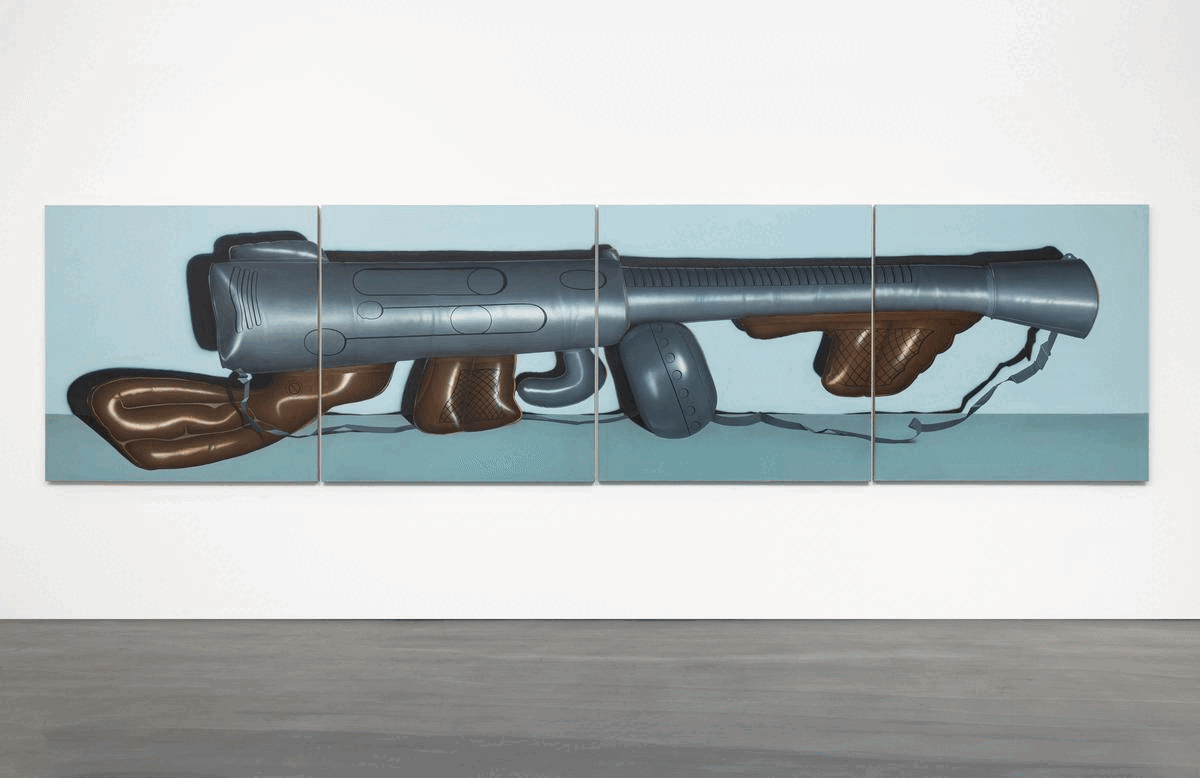
| Sun Yitian, Gun without bullets, 2022, acrylic on canvas, 150 x 150 cm each (4 parts), 150 x 606 cm (overall). Photo © Andrea Rossetti | |
|
In her conversation with Liu Ye, Sun Yitian also spoke about how her childhood experiences let to the inclusion of doll heads into her iconography. :
"When I was little I had lots of toys, and Barbie was one of them. Her boyfriend was this very handsome hunk who lived with her in a beautiful house. Every day I would stand in front of my closet at home, arranging Barbie and Ken, and then I’d gaze at them for a long time, imagining myself shrinking and going into that beautiful house. So I started to feel a kind of connection to this character. I hoped that Ken, as the male character in my pictures, would become an object of scrutiny—his image, as Barbie’s boyfriend, really suits the characteristics of our era: he’s erased all his rough edges and shortcomings. He’s very handsome, and also very healthy and positive. But he’s hollow—he’s plastic inside, he’s just a partner for Barbie. I couldn’t paint him as a toy, but as a living, beautiful, human head. As the pilgrim is void of traditional beliefs, it reflects the problems of our time."
The complete conversation between Liu Ye and Sun Yitian can be found in the newly published monograph Sun Yitian, Island of Treasure. For ordering information see below.
|
|
|

| Exhibition view: Nathan Carter, Faction de Femmes, Lady Lieutenants and the Triangular Trixic Cryptical Curvy Constellation, Esther Schipper, Paris, 2023. Photo © Andrea Rossetti | |
|
Nathan Carter's solo exhibition Faction de Femmes, Lady Lieutenants and the Triangular Trixic Cryptical Curvy Constellation opened in our Paris gallery. On view through May 28, 2023 are new sculptural works and paintings by Carter, as well as photographs produced in a collaborative project with Dan Estabrook and Mercedes Jelinek.
Incorporating elements of storytelling, Nathan Carter’s references include the visual language of surrealist erotic illustration, cartography, celestial navigation charts, subversive music, outsider subcultures and the history of abstraction, the works become maps and fluid atmospheric landscapes which the artist has likened to sculptural way-finding diagrams leading to intentional communities. The artist’s new language of forms is endowed with highly charged emotional content and symbolic associations that refer to the driving force of his contemporary work: self-invention. Nathan Carter is MARS The Goddess of Sex and Death. Since 2020, the artist conjures and channels her as “the woman who I am” in séance-like photo sessions.
The exhibition features, for the first time, a selection of works from the artist’s collaborative project MARS The Goddess of Sex and Death. Beginning in 2020, Carter and Estabrook staged a series of photographs, images and portraits of Carter conjuring MARS The Goddess of Sex and Death as she explores her trans-identity. Joined by Jelinek in 2021, the development of MARS The Goddess of Sex and Death can be traced in carefully choreographed sets and attributes. The photographs picture MARS The Goddess of Sex and Death in various situations and erotically charged poses. Endowed with a set of recurring markers—a large, disheveled wig, batwing eyes, spiky fingernails, fishnet stockings, short skirts, stiletto heels, a silver skull and cross bones emblazoned on her black cape—MARS looks out at the spectator at times playfully, seductively, or defiantly. Her representations draw on a wide range of historical imagery: Weimar erotica, Cecil Beaton or Madame Yevonde 1920s portraits of British aristocrats, Parisian trans women photographed in the 1960s by Swedish photographer Christer Strömholm, surrealist photography by Pierre Molinier, and images of 1980s intentional communities and postpunk subcultures. The photographs on view at the gallery are unique and have been hand-tinted and adorned with colorful drawn details.
Concurrently, Three Star Books Paris is presenting a new artist book by Nathan Carter and Dan Estabrook entitled MARS The Goddess of Sex and Death, as well as an exhibition of photographs and collaged poster prints created collaboratively by Nathan Carter, Dan Estabrook and Mercedes Jelinek.
Paris Gallery Weekend
Special opening hours
Friday, May 26, 11am-7pm
Saturday, May 27, 11am-7pm
Sunday, May 28, 2-7pm
|
|
|

| Nathan Carter × Dan Estabrook, MARS The Goddess of Sex and Death, 2022, 20 copies, signed and numbered on the cover, 31 × 33 × 2 cm, 24 hand-sprayed pages, 12 archival pigment prints, cardboard, paper and fabric, Anodised Chicago screws. Photos © Three Star Books | |
|
External exhibitions during Gallery Weekend Berlin
|
|
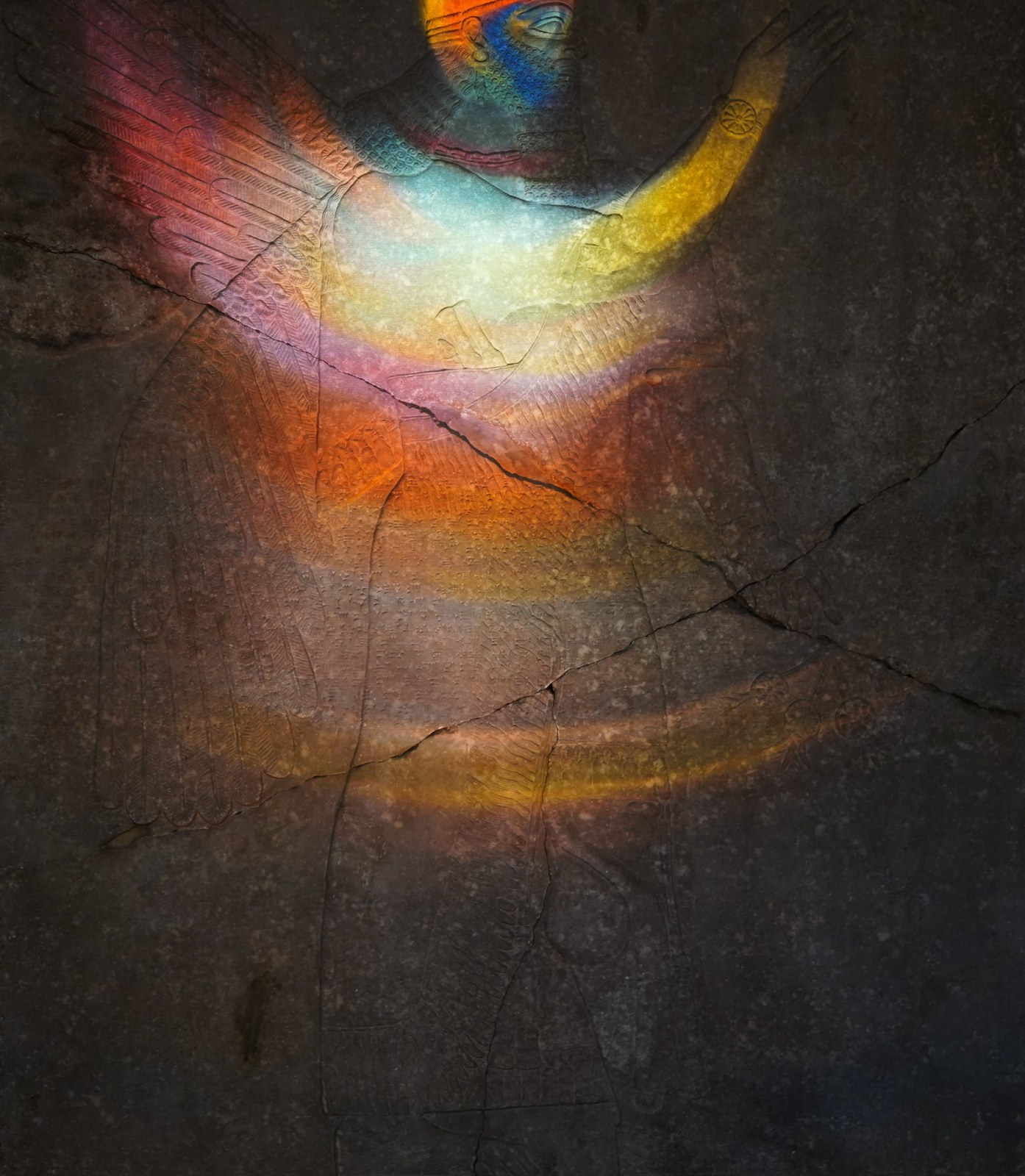
| Exhibition view: Liam Gillick, Filtered Time, Pergamonmuseum, Berlin, 2023. Photo © the artist | |
|
Liam Gillick Filtered TimePergamonmuseum James-Simon-Galerie Bodestraße, Museum Island 10178 Berlin Through October 15, 2023 www.smb.museum
Informationen auf DeutschIn a historical first, the Vorderasiatisches Museum and the Hamburger Bahnhof – Nationalgalerie der Gegenwart join forces on a trans-historical, site-specific presentation by Liam Gillick throughout the halls of the Pergamonmuseum. Given complete artistic freedom at the Pergamonmuseum, Gillick engages with the historical building and its collections. Entitled Filtered Time, his interventions take the form of light and color projections and soundscapes that draw attention to the various historical periods of the Pergamonmuseum. From Babylon’s iconic Ishtar Gate to the monumental sculptures of Tell Halaf, Gillick adds an overlay that exposes connections across different historical periods of the Pergamonmuseum. Please note: Pergamonmuseum is exclusively entered through James-Simon-Galerie, Bodestraße. |
|
|

| Exhibition views: Liam Gillick, Filtered Time, Pergamonmuseum, Berlin, 2023. Photos © the artist | |
|
Here an excerpt from Liam Gillick's essay on the project, describing what to expect at the museum.
Filtered Time aims to introduce new color and heighten affects – feelings and emotions – to the museum in order to give visitors an opportunity to rethink the collection in relation to color, time, place and subjectivity. Our understanding of the ancient artifacts of Babylon, Assyria, Mesopotamia and Syria is conditioned by the history of archaeology and changing approaches to discovery, collaboration, research, display, and controversy. Filtered Time attempts, in a non-didactic way, to expose the museum as a social and political marker of time, with its complicated past and its interrupted histories. It does this without the use of texts or instructions but instead by deploying light, sound and projected images onto the museum as a total art installation designed to affect the senses and alter time perception.
Filtered Time attempts to treat the museum with a light touch. It does not add new objects or rearrange the collection nor rewrite history. It is an attempt to address the question of how we experience museums of Historic and Ancient art by introducing doubt, ambiguity and affect rather than immersive 3D “experiences”. Nothing has been changed, nothing altered but instead a layer of light and sound and color has temporarily shifted our perception of time, both accelerating and decelerating our journey through the space.
A forthcoming publication will include essays by Liam Gillick and Barbara Helwing, the Director of the Vorderasiatisches Museum, as well as a foreword by Sam Bardaouil and Till Fellrath, the Directors of the Hamburger Bahnhof – Museum für Gegenwart – Berlin. |
|
|

| Exhibition view: Liam Gillick, Filtered Time, Pergamonmuseum, Berlin. Photo © the artist | |
|
Broken Music Vol.2 — 70 Years of Records and Sound Works by Artists
|
|
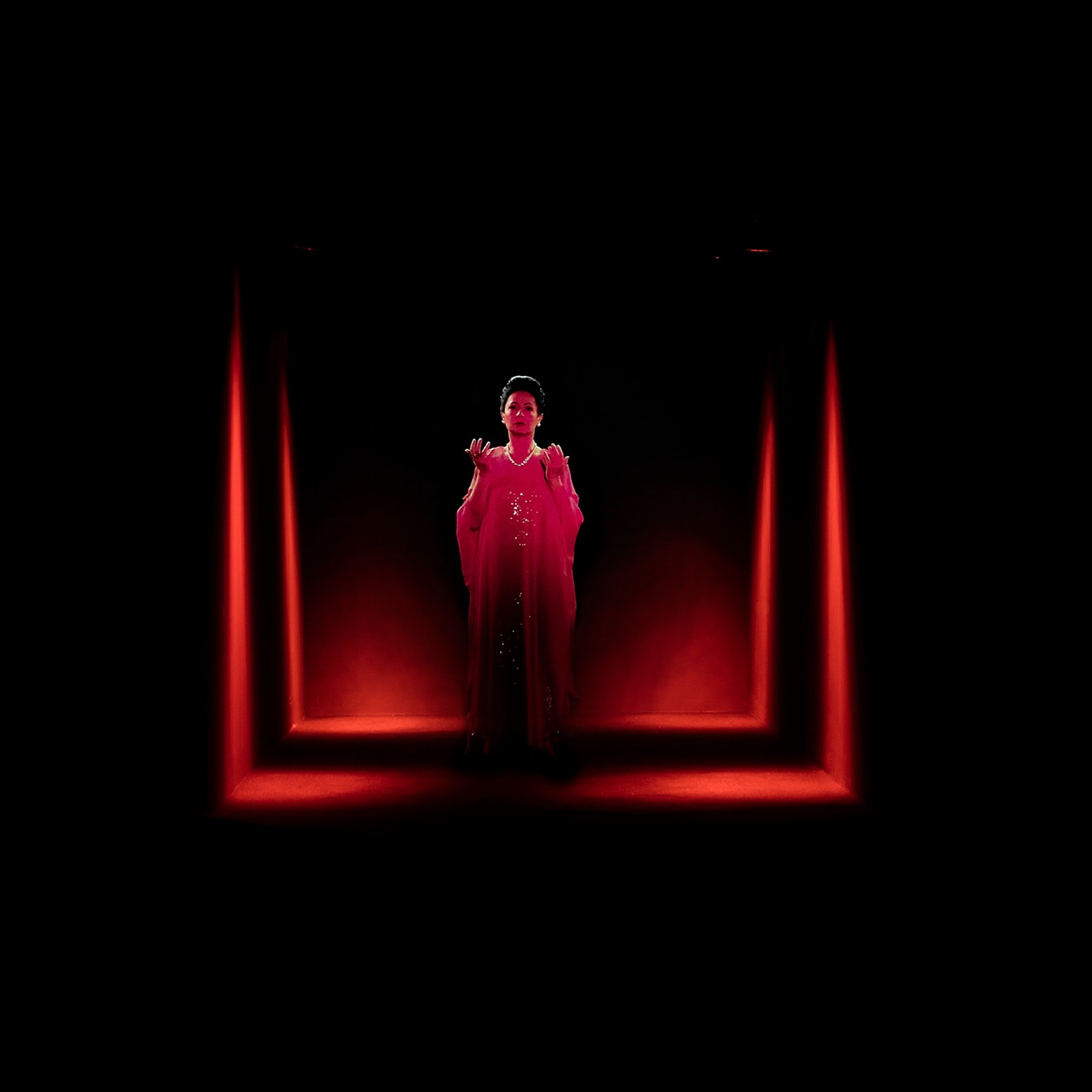
| Dominique Gonzalez-Foerster, OPERA (QM.15), 2016, HD video, projector, screens, media player, amplifier, speakers, lights, curtains, duration 8:30 min. © the artist / VG Bild-Kunst, Bonn 2023. Photo © Andrea Rossetti
| |
|
Broken Music Vol. 2—70 Years of Records and Sound Works by Artists With Martin Boyce, AA Bronson, Angela Bulloch, Thomas Demand, General Idea, Liam Gillick, Dominique Gonzalez-Foerster, Rodney Graham, Christoph Keller, Ari Benjamin Meyers, Ugo Rondinone, Anri Sala and more. Hamburger Bahnhof Invalidenstraße 50-51 10557 Berlin Through May 14, 2023 www.smb.museumIn 1989, a traveling exhibition Broken Music started in West Berlin, which had its finger on the pulse of the time. The person behind it: Ursula Block, owner of ‘gelbe MUSIK’ (1981 – 2014), a small yet world-famous record store in Berlin-Wilmersdorf: everyone visiting the city would drop by, including influential artists and musicians such as John Cage, Yoko Ono, Sonic Youth and Björk. Following this influential exhibition, Broken Music Vol. 2 looks at artists' engagement with the vinyl record and music in a broader sense over the past seven decades. The exhibition presents 700 records, sound pieces and immersive media installations, arranged in ten chapters that explore links between the fields of music and visual art Among the works presented will be Dominique Gonzalez-Foerster's magisterial Opera (QM.15) which transforms a recording of the artist’s live apparition as Maria Callas into a holographic illusion that creates a ghostly operatic presence in a large dark and empty space. Opera (QM.15) fuses multiple temporal layers: the looped holographic projection of DGF’s live apparition of the famous diva is itself a construct of the younger Maria Callas’s voice clothed in the iconic red dress of the opera singer’s final performances. The exhibition is curated by Sven Beckstette and Ingrid Buschmann, curators at the Hamburger Bahnhof – Nationalgalerie der Gegenwart.
|
|
|

| AA Bronson, Mirror Photo #1, 2000, C-print, 27,9 x 35,6 cm (unframed), 40 x 50,7 x 3,1 cm (framed). Photo © Andrea Rossetti | |
|
the collection. Curated by Krist Gruijthuijsen With works by AA Bronson, Martin Boyce, Rodney Graham, and Tino Sehgal
FAHRBEREITSCHAFT, Berlin-Lichtenberg Herzbergstraße 40–43 10365 Berlin April 23 – October 29, 2023 www.haubrok.orgOpening Sunday, April 23, 4-7pm
Gallery Weekend Berlin hours – Sunday, April 30, 11am-6pm A visit to the exhibition is possible on special dates and as part of guided tours - further info via www.haubrok.org
|
|
|
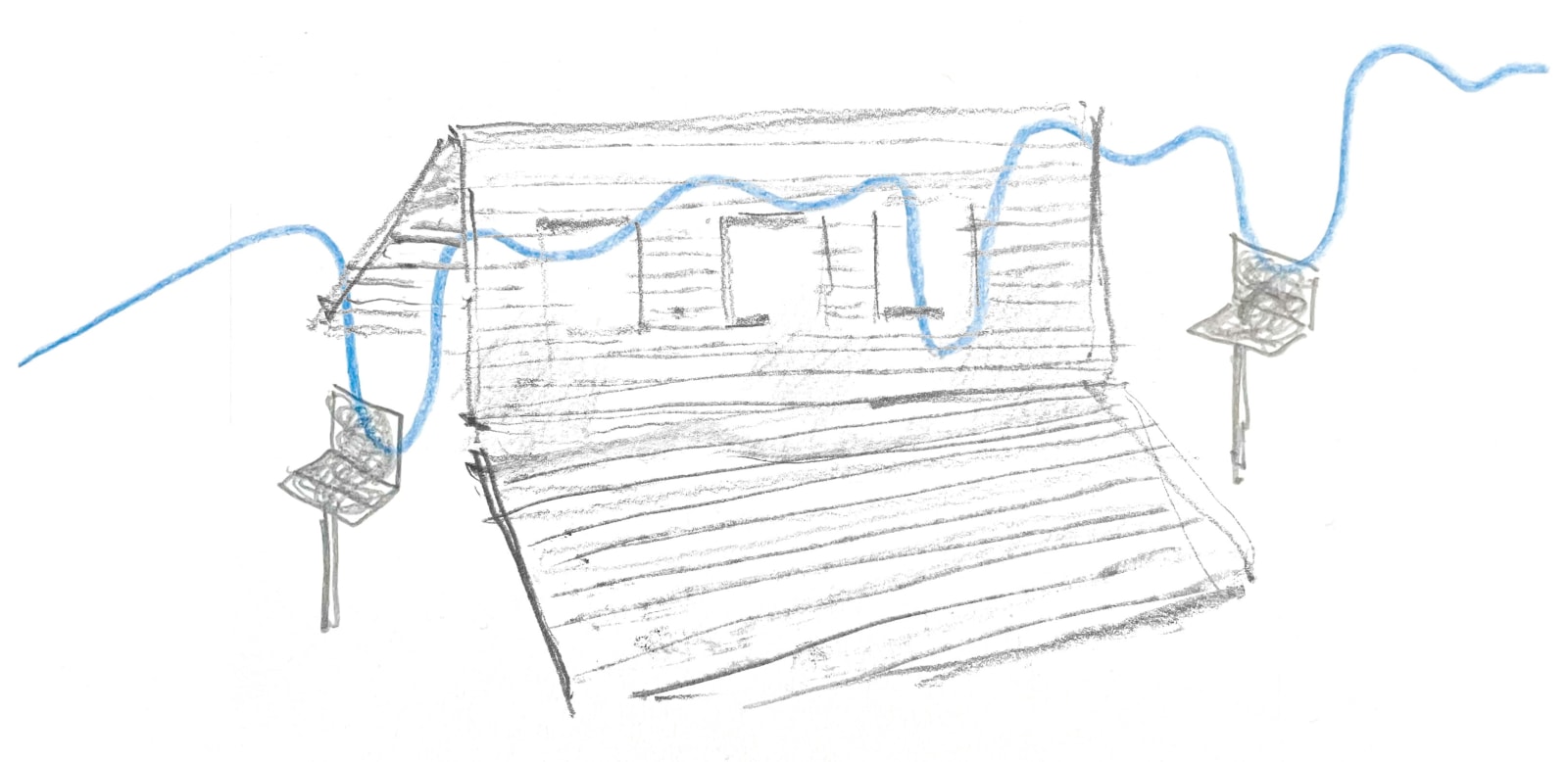
| Jean-Pascal Flavien, make-up house, 2022 - . Drawing © the artist.
| |
|
Jean-Pascal Flavien make-up house - Sexuality line & Heart water by Jean-Pascal FlavienSan Gimignano Lichtenberg Am Wasserwerk 22F 10365 Berlin Special hours during Gallery Weekend Berlin via www.estherschipper.comFind via Google MapsNext intervention – Saturday April 22, 3-5pmFor the fourth public appearance of the make-up house a winding sexuality line is passing through the house as make-up.
Jean-Pascal Flavien’s new house, entitled the make-up house, is all surface. Sheets of corrugated metal folded to create a sheltering space, the house is open to the elements, with a small area to inhabit—just enough space to put on some make-up. Equipped with a small desk, a mirror and a selection of cosmetics, special guests are invited to propose and make a maquillage for the house. The project continues through 2023, as a number of new interventions will proceed to transform the make-up house. The recurring events are ephemeral, lasting from a day to a few weeks. The house will live the life of a surface, existing by making appearances. Simultaneously a person can make up their own face in a similar fashion. The first iteration took place in early November and was created by Josée Gensollen, and in December 2022 the second intervention was from Karl Holmqvist, a third by Sam Chermayeff Office in February 2023. Architectural discussions have long focused on form and function, whether a structure’s surface should reflect its construction process and/or its purpose. Flavien’s house takes another approach: drawing attention to the role surfaces play in daily life, fashion and building, focusing on the lightness created by the ephemeral. The make-up house will change according to the newest maquillage, its existence will be located in the eyes of others. Existing in the surface could be a motto for a building. The make-up house is located on a construction site. Access is restricted to the immediate environs of the structure. Entrance to the site is at your own risk. |
|
|
Around Germany
Cemile Sahin |
|
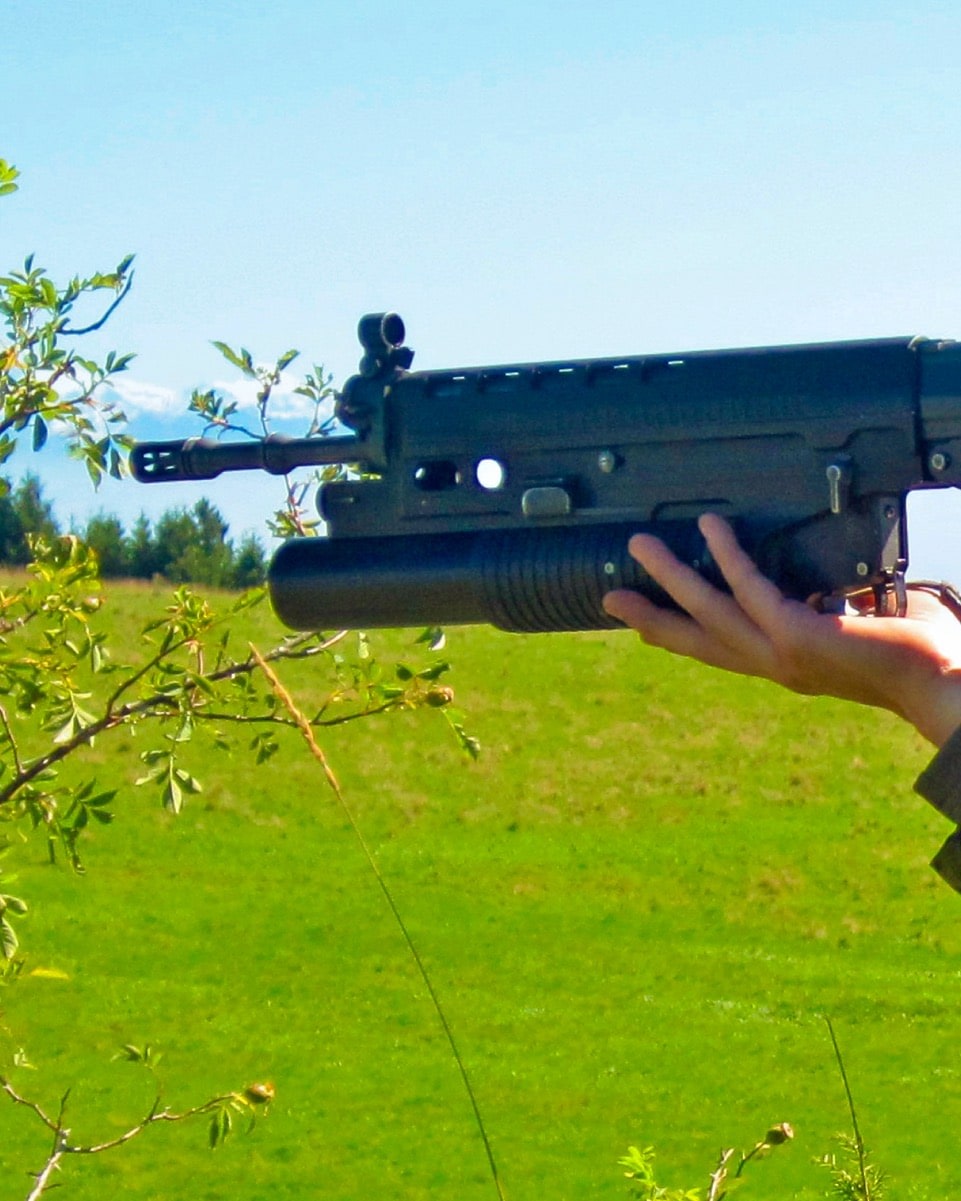
| Photo © Cemile Sahin
| |
|
Cemile Sahin Gewehr im Schrank / Rifle in the ClosetNassauischer Kunstverein Wiesbaden Wilhelmstraße 15 65185 Wiesbaden April 28 – July 23, 2023 Opening Thursday April 27, 6pmwww.kunstverein-wiesbaden.deFor the Nassauischer Kunstverein Wiesbaden, Cemile Sahin has developed a spatial installation entitled Gewehr im Schrank - Rifle in the Closet, in which she addresses the historical development of Western societies’ militarization, with Switzerland as a case study. The title refers to the standard practice of Swiss soldiers taking home their service weapons after military training and storing it in the closet for emergencies. As a result, Switzerland is the country with the highest density of privately stored weapons in Europe. The installation consists of a video combined with floor and wall collages, interweaving different historical, political, technical and digital aspects of militarization. The starting point of Sahin‘s research was the two treaties signed a hundred years ago, which divided up the territories of the Ottoman Empire after World War I: the Treaty of Sèvres (1920) and the Treaty of Lausanne (1923), in which, among other things, the current national borders of Turkey were defined. In 2023, as the Treaty of Lausanne celebrates its centenary, the consequences of this arbitrary border demarcation are still felt in the region today. Sahin focuses on Lausanne, the capital of the Canton of Vaud, as the negotiating site of historic armistice agreements and peace treaties on the one hand and simultaneously the most important location for the production of combat drones today.
|
|
|

| Exhibition view: Julia Scher, Maximum Security Society, Museum Abteiberg, Mönchengladbach, 2023
Photo © Andrea Rossetti | |
|
Julia Scher Maximum Security Society
Museum Abteiberg Abteistraße 27 / Johannes-Cladders-Platz 41061 Mönchengladbach Through August 20, 2023 www.museum-abteiberg.de
Julia Scher first began to explore private and public surveillance in the late 1980s — that is, even before the advent of television formats including Big Brother or films like The Truman Show. In doing so she almost prophetically anticipated developments that would come to dominate 21st-century society, where constant tracking of personal data has become the norm. One important reference for the artist has been the work of Gary T. Marx (b. 1938), the American sociologist who coined the term “maximum security society.” Scher’s multimedia practice, which was influenced by the California art scene of the 1970s and 80s and held a key place in 1990s new media- and culture-critical art discourse, spans camera- and spatial installations, internet projects, video and films, sculptural works, assemblages, photographs, and multiples. Scher has been creating supposed security environments since the late 1980s. Operating under the pseudo-brand Security by Julia, her surveillance camera- and monitor-based installations interrogate processes of control in private and public places and, in a strategy that has come to be described as immersive — i.e. involving the audience — almost absurdly heighten and distort that audience’s perception of both space and reality. Museum Abteiberg presents an essay-like overview of Julia Scher’s extensive oeuvre. The exhibition at Museum Abteiberg brings together large-scale installations such as Surveillance Beds and Wonderland; loans from the collection of Gaby and Wilhelm Schürmann, among others; as well as works from the artist’s early career that have never been shown before. Selected works are drawn from each of the artist’s creative phases and repeatedly refer to security-related aspects of the museum as an institution. The latter is also taken up in a new, site-specific version of her camera-and-monitor-based installation Predictive Engineering (1993—present), a piece Scher first realized for a show at the San Francisco Museum of Modern Art in 1993. The exhibition Maximum Security Society is realized in cooperation with Kunsthalle Zürich ( October 2022 – January 2023). The presentation at Museum Abteiberg is a larger, retrospective survey of her works. A comprehensive publication on the work of Julia Scher, initiated by Kunsthalle Gießen and DISTANZ Verlag, realized in collaboration with Museum Abteiberg, MAMCO Geneva and Kunsthalle Zürich, is scheduled for release in June 2023. |
|
|

| Exhibition view: Julia Scher, Maximum Security Society, Museum Abteiberg, Mönchengladbach, 2023
Photo © Andrea Rossetti | |
|

| Philippe Parreno, MARILYN, 2012. Film, color, sound, duration: 23 min. © Philippe Parreno
Exhibition view at Espace Louis Vuitton München, 2023. Courtesy of the artist and Fondation Louis Vuitton. Photo credits: © Timo Ohler / Louis Vuitton | |
|
Philippe Parreno MarilynSelected works from the collection Espace Louis Vuitton München Maximilianstraße 2a 80539 Munich Through August 6, 2023 www.louisvuitton.comOn view at the Espace Louis Vuitton Munich is Marilyn, an exhibition dedicated to Philippe Parreno, pursuing the Fondation Louis Vuitton’s mission of showcasing holdings from the Collection to an international audience through the “Hors-les-murs” programme. For Marilyn, the Espace Louis Vuitton München invites you to experience emblematic works from the Collection by Philippe Parreno in various media. Alongside the eponymous video installation Marilyn (2012), the series of drawings In Preparation of Marilyn: "The Quasi Living" (2013) will be shown as well as the video installation The Writer (2007), and the sculpture Untitled (2010). Comprising drawings, sculpture and film, these works typify Parreno’s multidisciplinary practice through which he continues his quest to find an ultimate form of communication capable of transcending language. Philippe Parreno's reputation has been built on the diversity of his practice which spans a vast range of media including film, sculpture, drawing and performance. Through his multidisciplinary practice, Parreno has created unexpected artworks that question the boundaries between reality and fiction, often blurring the distinction between the two. The artist invites the viewer to radically re-evaluate the nature of reality, memory, and the passage of time, elaborating universes where the aesthetics of social exchanges and situations are prioritized over the creation of art objects. |
|
|
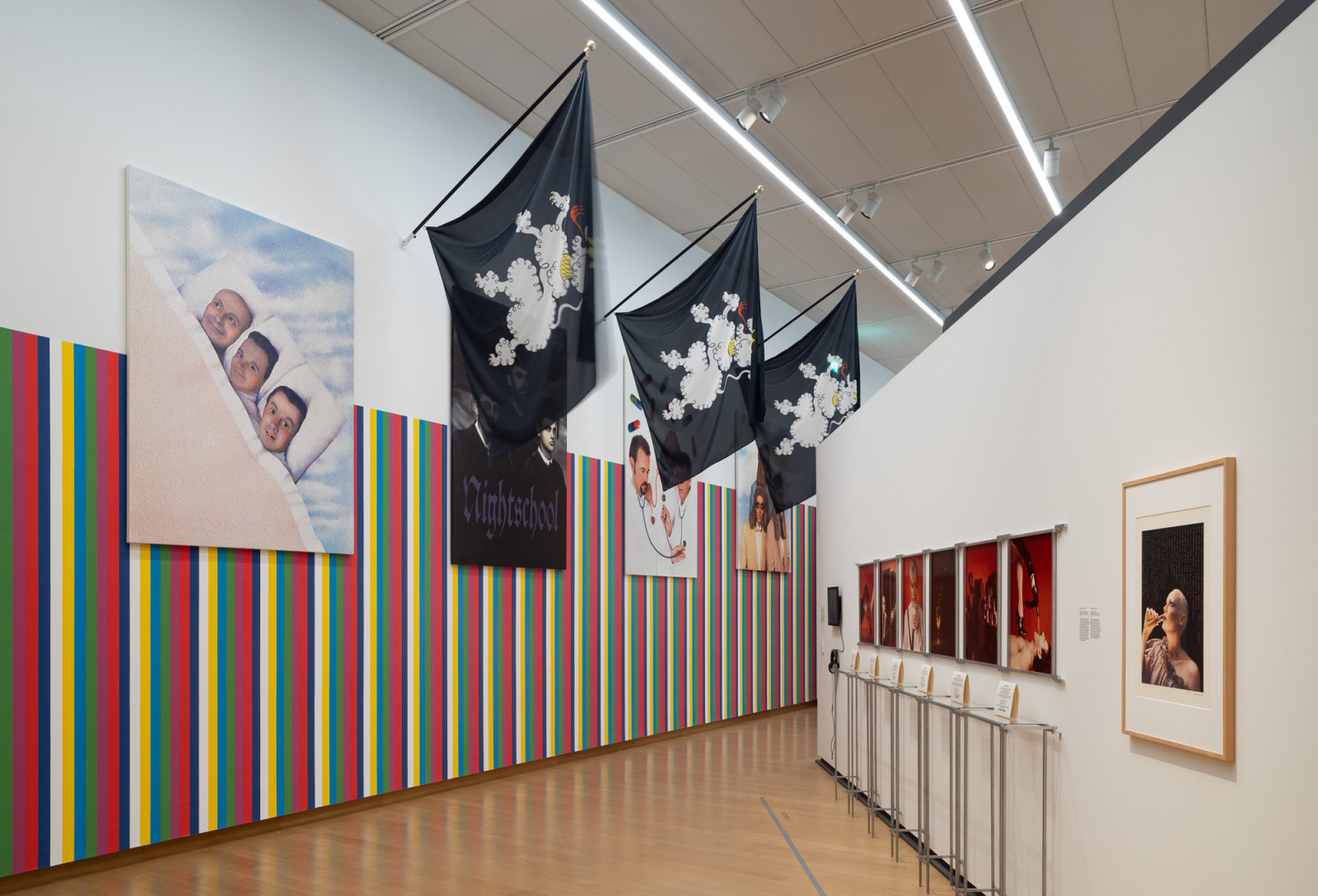
| Exhibition view: General Idea, Stedelijk Museum Amsterdam, 2023. © General Idea. Photo © Peter Tijhuis | |
|
General IdeaStedelijk Museum Museumplein 10 1071 DJ Amsterdam Through July 16, 2023 www.stedelijk.nlGeneral Idea is a groundbreaking Canadian artist group that in the 1970s and 80s was renowned for their satirical approach to the deconstruction of the media and the art world. The exhibition is the largest-ever survey of their oeuvre, comprised of large sculptures and installations, paintings, videos and publications, archival material – and their signature wallpapers. Thanks to its special relationship with General Idea, the Stedelijk can now present the largest-ever survey of their oeuvre. In 1979, the Stedelijk was the first museum in the world to host an exhibition of their work and began collecting it. Because of this history, General Idea came to consider Amsterdam as their ‘second home’ and gifted the Stedelijk a large part of General Idea’s archive in 2018, making the museum a major knowledge center for their work. With over 300 works, this traveling exhibition’s stop in the Netherlands is a second homecoming for General Idea. The exhibition was first presented at the National Gallery of Canada, Ottawa in 2022 and continues to Gropius Bau, Berlin from September 22, 2023 to January 14, 2024. |
|
|
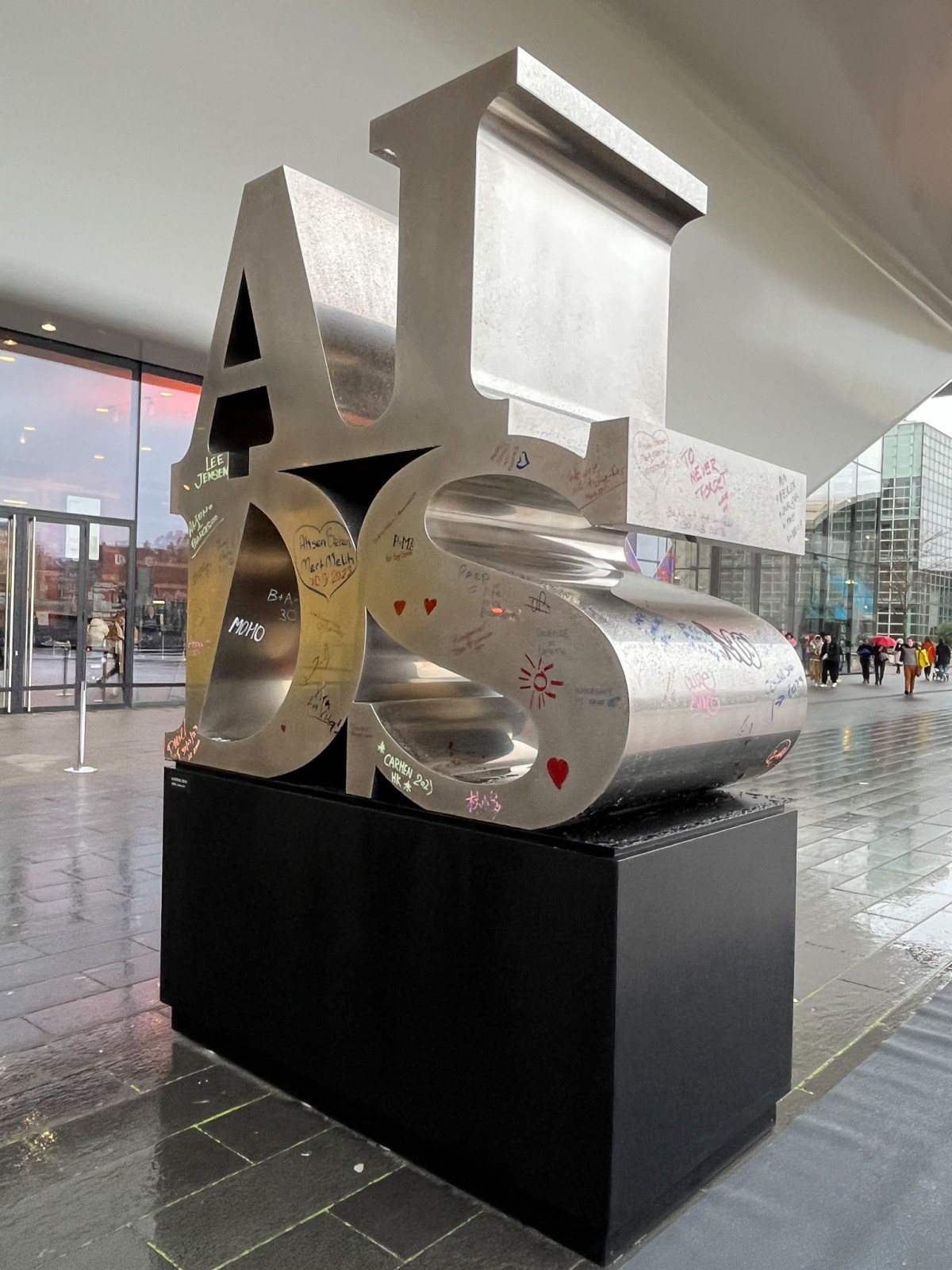
| Exhibition view: General Idea, Stedelijk Museum Amsterdam, 2023. © General Idea. Photo © Leah Turner
| |
|
Daniel Steegmann Mangrané |
|

| Exhibition view: Daniel Steegmann Mangrané, A Leaf Shapes The Eye, Museum of Contemporary Art Kiasma, Helsinki, 2023.
Photo © Teresa Estrada | |
|
Daniel Steegmann Mangrané A Leaf Shapes The Eye Museum of Contemporary Art Kiasma Mannerheiminaukio 2 FIN-00100 Helsinki Through September 10, 2023
www.kiasma.fi
Deeply influenced by the socio-natural context of Brazil, the work of Daniel Steegmann Mangrané (Barcelona, 1977; lives and works in Rio de Janeiro) looks into ecology as a tool to analyze the relations of mutual transformation present in life. Museum of Contemporary Art Kiasma is presenting the largest survey of the artist to date, taking over 1000 sq meters and spanning 25 years of work. The exhibition includes a large array of media such as collage, drawing, holograms, installation, moving image, photography, sculpture, sound, and poetry, and marks his Finnish debut. Employing apparently opposite ideas such as belonging and dissolution or opacity and transparency, the artist creates immersive environments, materializing liminal states where the visual and the material coalesce into each other. Echoing the use of bodily, perceptual and sensorial strategies as a means of political participation by 1960s Brazilian artists such as Lygia Clark and Hélio Oiticica, Steegmann Mangrané creates sensual, playful situations, which overcome artificial dualisms that have historically defined our reading of the world. Such dichotomies are not only false but also hierarchical, placing mind above body, rational thought above emotion or culture above nature, ultimately enabling noxious worldviews. In opposition Steegmann Mangrané proposes an integrated approach to address the critical moment of ecological crisis we are currently experiencing. The exhibition is curated by João Laia, chief curator of temporary exhibitions Kiasma and Hiuwai Chu, head of exhibitions MACBA with Piia Oksanen, curator of temporary exhibitions Kiasma. The exhibition is a co-production with MACBA - Museum of Contemporary Art of Barcelona, where it will travel in the fall. |
|
|
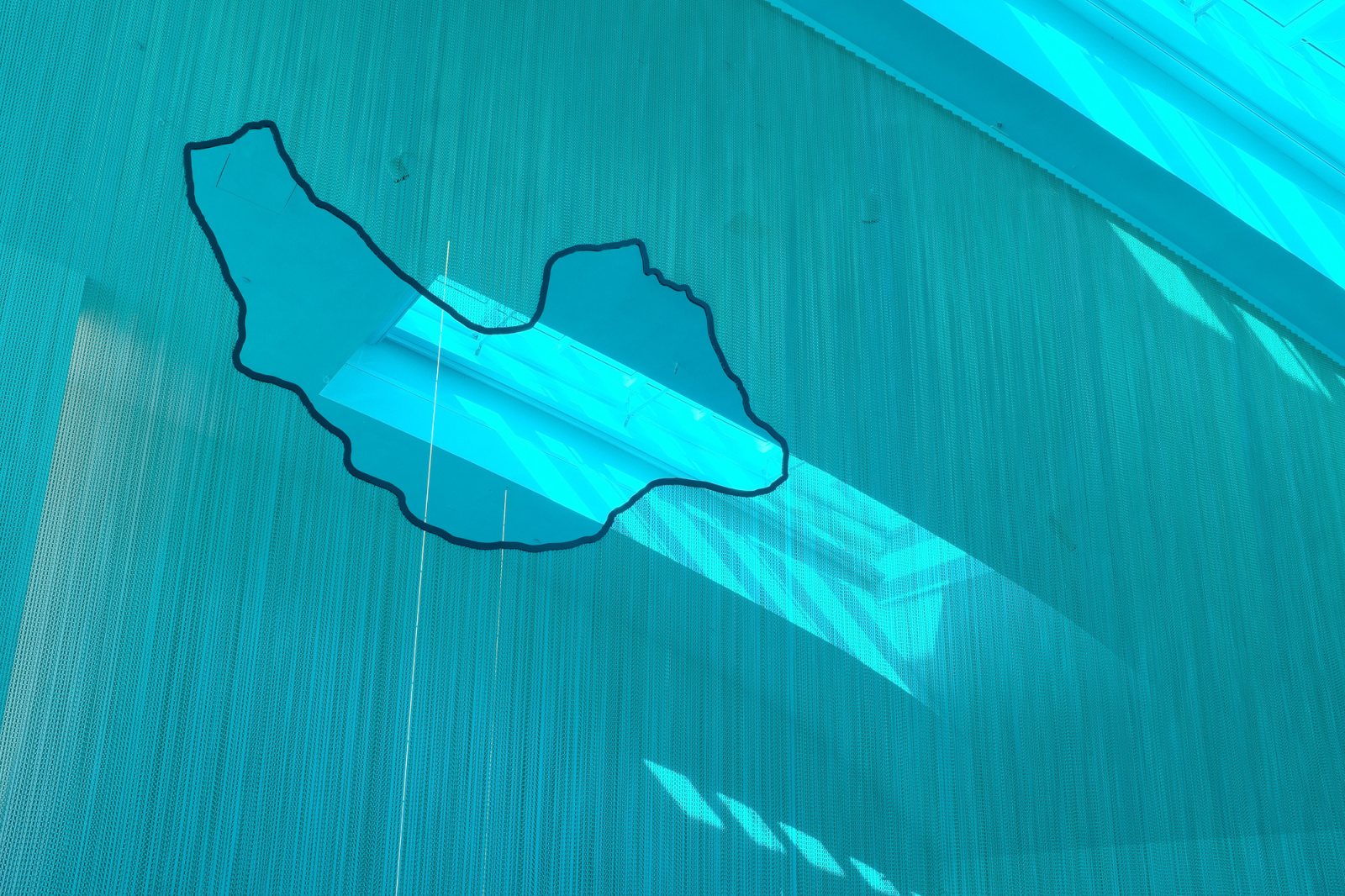
| Exhibition view: Daniel Steegmann Mangrané, A Leaf Shapes The Eye, Museum of Contemporary Art Kiasma, Helsinki, 2023.
Photo © Teresa Estrada | |
|
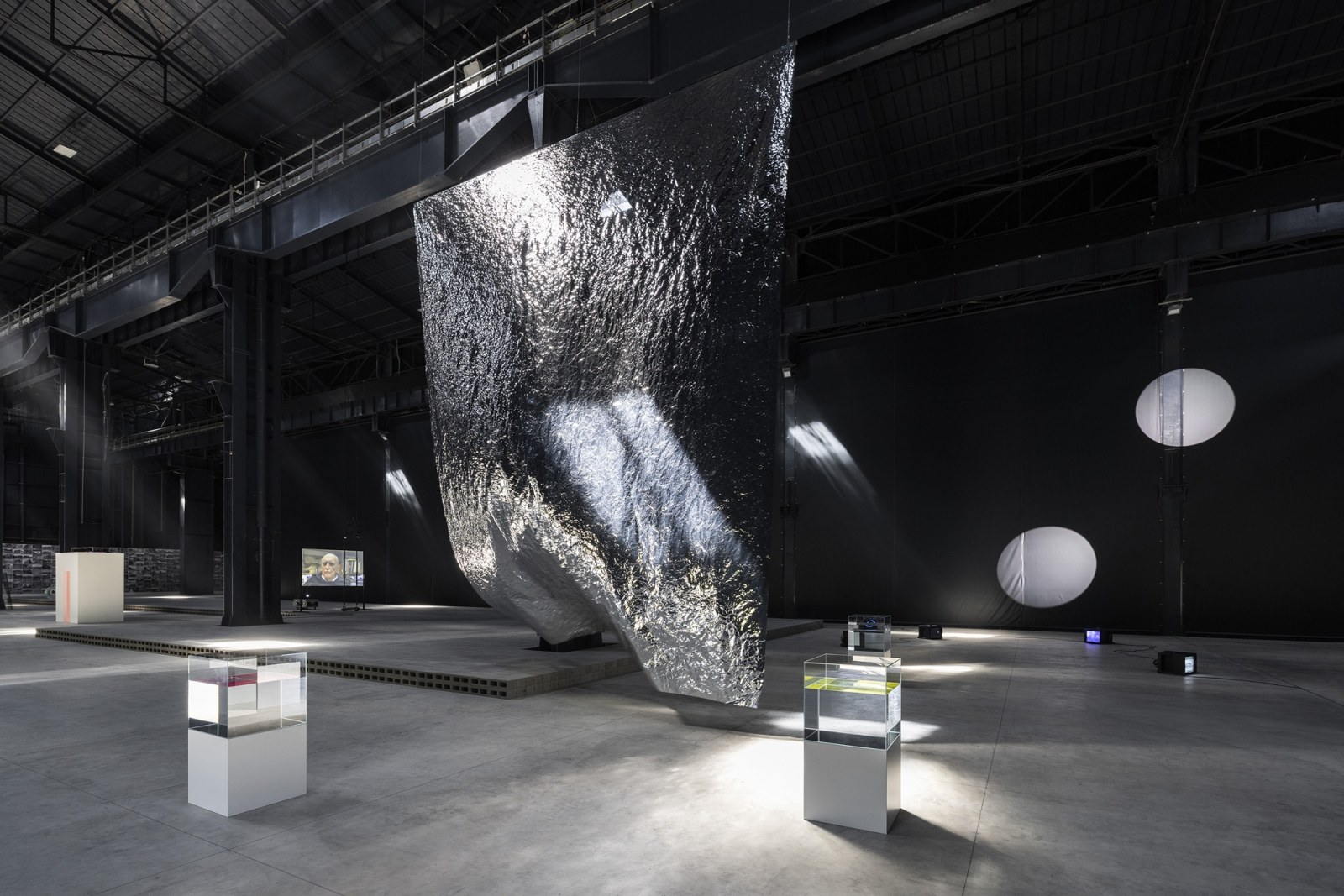
| Exhibition view: Ann Veronica Janssens, Grand Bal, Pirelli HangarBicocca, Milan, 2023
© 2023 Ann Veronica Janssens / SIAE. Photo © Andrea Rossetti | |
|
Ann Veronica Janssens Grand Bal Pirelli HangarBicocca Via Chiese 2, Milan Through July 30, 2023 www.pirellihangarbicocca.org
Since the late 1970s, Ann Veronica Janssens has developed her research around light and its relationship to what surrounds it, often creating site-specific works that challenge the immutable nature of sculpture and installation. Janssens has built her practice on overcoming the art object through its dematerialization and deconstruction. Through minimal forms and gestures that have an anti-monumental quality, Janssens is able to change the public’s perception of space. Using light, color, mirrors, air or artificial fog, the works of Janssens call for the direct participation of viewers, invite them to experience reality differently, to develop an awareness of their senses and of the architecture. Often based on experiments carried out in collaboration with scientists, the artist’s works become labs for testing the boundaries between properties and physical-material elements that are regarded as opposites, such as light and darkness, sound and silence, emptiness and presence, the tangible and the incorporeal. Grand Bal at Pirelli HangarBicocca, Milan explores the career of Ann Veronica Janssens as well as different aspects of her practice. Presenting the most comprehensive selection of her works to date, it includes both historical projects and new productions designed to interact with the space of the Navate within Pirelli HangarBicocca and the outdoor area, expanding its boundaries. The resulting alterations fit dynamically within the exhibition plan, conceived by the artist as a visual and sound choreography that centers not so much on objects as on visitors: they are called upon to move and participate directly, following the train of sensations and perceptions generated while experiencing the works. The title Grand Bal (grand ball in French) evokes precisely this performative dimension, and the dynamic relationship that is established between works, architecture and the human body as in a dance, where each and every element is necessary for the other to reveal itself completely. A monograph is forthcoming in May. |
|
|
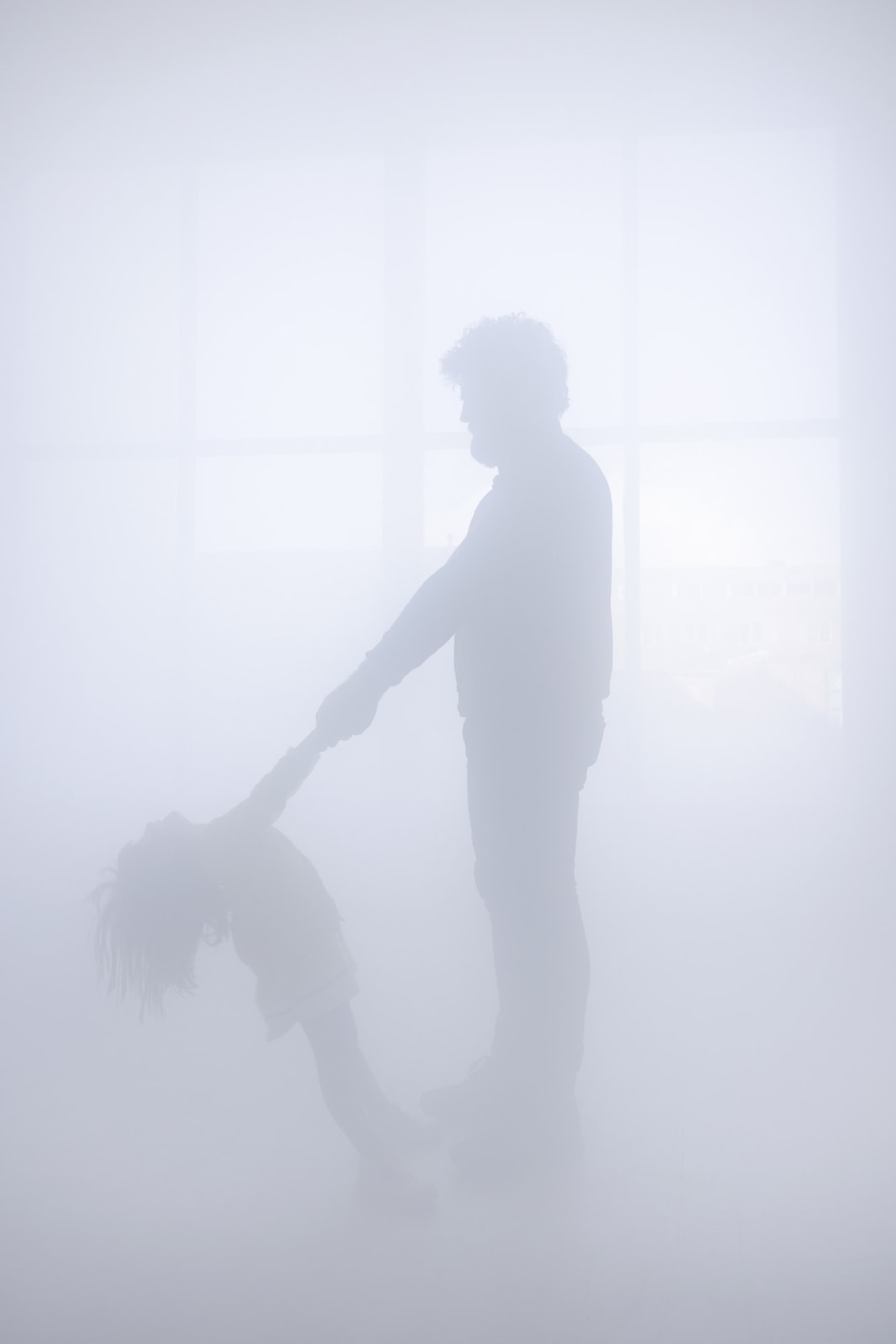
|
Ann Veronica Janssens, MuHKA, Antwerp, 1997. Artificial fog, dimensions variable.
Exhibition view: Ann Veronica Janssens, Grand Bal, Pirelli HangarBicocca, Milan, 2023
© 2023 Ann Veronica Janssens / SIAE. Photo © Andrea Rossetti
| |
|
|
|
Sun Yitian
Island of Treasure
2022
Publisher: BANK
Languages: English, Mandarin Chinese
Available here
|
|
Nathan Carter x Dan Estabrook
MARS The Goddess of Sex and Death
2022
Publisher: Three Star Books
Language: English
Available here
|
|
Liam Gillick
Half a Complex
2019
Publisher: Hatje Cantz
Language: English
Available here
|
|
Liam Gillick
Like a Moth to a Flame | Come una falena alla fiamma
Liam Gillick, Mark Rappolt, Tom Eccles, 2021 Publisher: Corraini Edizioni
Languages: English, Italian
Available here
|
|
Liam Gillick
Farbe ist Programm
2022
Publisher: Verlag für moderne Kunst
Language: German
Available here
|
|
Jean-Pascal Flavien
A sequence or phrase
2016
Publisher: Spector
Languages: English, German
Available here
|
|
Karin Sander
Skulptur / Sculpture / Scultura
2020
Publisher: Verlag der Buchhandlung Walther König
Languages: Italian, English, German
Available here
|
|
Cemile Sahin
ALLE HUNDE STERBEN
2020
Publisher: Aufbau Verlag
Languages: German
Available here
|
|
Philippe Parreno
H {N)Y P N(Y} OSIS / HYPOTHESIS
2017
Publisher: Mousse Publishing
Language: English
Available here
|
|
Daniel Steegmann Mangrané
A Leaf Shapes the Eye
2023
Publisher: MACBA Museu d'Art Contemporani de Barcelona, Museum of Contemporary Art Kiasma, Helsiki, and CAM - Centro de Arte Moderna Gulbenkian, Lisboa.
Language: English
Available here
|
|
|
ESTHER SCHIPPER
POTSDAMER STRASSE 81E
10785 BERLIN
|
|
|
|
|
